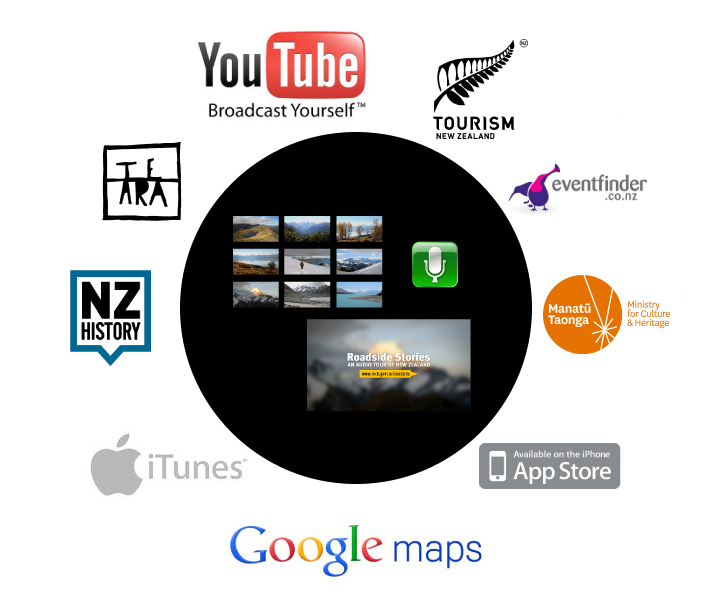Matthew Oliver is the Web Team Manager at Manatū Taonga – Ministry for Culture and Heritage. In this guest post, he shares his valuable experience and lessons learnt from using new content formats for government content.
At Manatū Taonga – Ministry for Culture and Heritage we're starting to look beyond our current websites to re-imagine how we produce content and information for New Zealanders. We see it as two-pronged: large-scale content syndication through APIs and the like, and discrete, tailored packages of content that we can distribute across many channels. Late last year we published our first iBook as part of one of those discrete projects. The iBook is available (for free) in Apple's iTunes store. It’s a small step for us but one that represents our current attempts to explore and experiment with new forms of digital publishing beyond our websites.
The Story Behind the Book
The content we used for this iBook, which is able to include images and multimedia as well as just text, was taken from our series of stories about New Zealand, Roadside Stories. These were produced as part of our contribution to the Rugby World Cup in 2011, and feature 140 stories from along the main highways up and down the country. In a similarly experimental vein, the Roadside Stories series was the first time we really thought about content as having a life that wasn’t restricted to one website. Instead we created the content and then found as many places as possible to publish it.
In creating the Roadside Stories, we started with stories and created the audio, then added images to create YouTube videos, then mapped it all to Google Maps as well as creating an iPhone app (and later an Android app) using MyTours. And only then did we start embedding the videos onto websites. The Roadside Stories ecosystem looks a bit like this:

The Roadside Stories project relies on a number of agencies, products, services, and websites, including YouTube, Tourism New Zealand, Eventfinder, the Ministry for Culture and Heritage, the iPhone App Store, Google Maps, iTunes, NZHistory online, and Te Ara – The Encyclopedia of New Zealand.
From there it became a fairly straightforward matter to create an iBook using a couple of the Roadside Stories tours, namely the routes from Christchurch to Invercargill and then Invercargill to Queenstown. The iBook combines audio of the stories with short introductory text and maps, as well as a full slide show of images. To round it out we’ve included additional text (lifted from Te Ara and NZHistory) and links to our websites for more information about the places.
Again, we’re starting to see our Manatū Taonga – Ministry for Culture and Heritage websites as a collection of content in itself, rather than separate silos, and as a rich source that can be recombined in new forms and formats. More than that, we’re hoping to extend that thinking to include a much wider range of sites from across New Zealand’s rich and varied online cultural world.
The Whys and Wherefores
So why are we doing this, and where to next? We love our websites and know that plenty of users out there do too, but we have to admit that for many web users their experiences live elsewhere. They’re on Facebook and YouTube more than they’re visiting Te Ara and NZ History. Our approach aims to achieve two things: first, give users content in the places they visit that they can share where they are. But secondly, we want to let our content and its users advertise our websites for us. At its core is the belief that our content was paid for by the public and represents a major investment in our country’s intellectual property. It’s on us to make it as useful and promote it as widely as possible, so the public can benefit from that investment.
We’ll be doing more of this kind of work but we’ve learnt a few things through Roadside Stories. The original series was an ad hoc affair. Jock Phillips initially thought of producing the stories on audio CDs to hand out to international visitors as they arrived for the Rugby World Cup. The cost of the CDs put us off that idea and we were left scrambling as to how to present the content. That’s when it went from 140 audio stories to 140 audio stories, half a dozen images per story, short intro text, creating videos, adding further links and geo-locations, and then uploading each variant to half a dozen websites.
In hindsight, better tracking of each story and its different assets, and where each was in the production and publication process, would have made the project a lot smoother. We also had to make some fast content decisions. We grabbed any related images we could find for the YouTube videos, but unfortunately they don’t marry up with the text. Sometimes you don’t notice; sometimes you do. Historic images would have been great too, but we didn’t have time for clearing copyright so we skipped that. Also, if you’re recording audio or making video, your content has to 100% accurate at each stage in the process. Re-recording is expensive; recompiling video is time-consuming; and re-uploading videos to YouTube creates a new instance of your video and new URL - not so good if anyone’s already embedded one with errors!
Tell Us What You Think
The iBook is an experiment and we’d love your feedback on it and thoughts on whether this is the sort of content and format that you’re interested in seeing more of. We’ve included a link to a survey at the end of the book, or you can leave a comment here. Some readers will question why we produced an iBook that can only be read on an iPad, and it’s a fair question. It’s a pragmatic approach really: iAuthor, the software that produces iBooks, made it simple to produce something beautiful.
But it points to something we need to look at next: if you’re producing an app or any other kind of closed content, you have to given it a home on the open web as well. This is an idea that one of this year’s Webstock speakers, Craig Mod, pushes really strongly. The Roadside Stories page goes halfway there but in future we plan to do more. Here’s a great example from the Historic Places Trust and Hamilton and Waikato Tourism on the Waikato Wars that blends web content with downloadable content for offline and even physical use.
We’re eagerly awaiting developments with the platform-neutral epub format as it starts to support more of the features that appear in iBooks, and will be releasing a few experimental ebooks soon. In the meantime, those of you with an iPad, have a play with the results of our foray into the world of ebooks, iBooks, digital books – call them what you will – and let us know what you think.
This post is based on a post that originally appeared on the Te Ara blog, Signposts: From encyclopedia to iBook and beyond.


